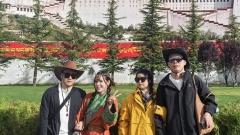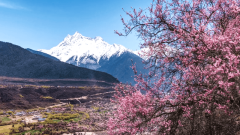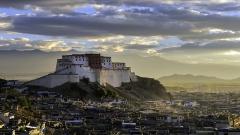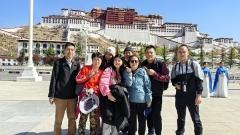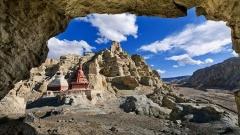Q1. When is the best time to trek in Tibet?
The most reliable window for trekking across the Tibetan Plateau is spring and autumn — roughly April to October, with the clearest conditions often in May–June and September–October. These months bring milder temperatures, better visibility and less risk of winter snow on high passes. Summer brings greener valleys after the monsoon, but always expect strong sun by day and cold nights at altitude.
Q2. Is trekking in winter possible?
Winter treks are generally not recommended. High passes and remote trails can be blocked by snow, temperatures drop sharply and services (lodging, vehicles, porters) are limited or unavailable. For safety and comfort, plan your trek within the April–October season.
Q3. How should I prepare for altitude sickness?
Tibet’s trekking zones are high — many routes sit above 4,000 m — so acclimatization is essential. Spend at least 2–3 days in Lhasa or another lower-altitude stop to let your body adjust; ascend gradually on the route, stay well hydrated, avoid alcohol, and rest when needed. Carry basic altitude medication in your first-aid kit and tell your guide immediately if you get symptoms. If symptoms worsen, descending to a lower altitude is the safest remedy.
Q4. What permits do I need to trek in Tibet?
Foreign visitors must hold a valid Chinese entry visa plus a Tibet Travel Permit issued by Tibet authorities. For most trekking routes outside Lhasa you will also need additional permits (e.g., Alien’s Travel Permit or special area permits). These permits are obtained through a registered travel agency; we will arrange them for you.
Q5. Can I trek independently in Tibet?
No — international tourists are required to travel with a licensed local travel agency and an authorized guide. Independent trekking and solo travel in most Tibetan regions are not permitted by local regulations. Guided travel ensures permits, local knowledge, safety and smoother logistics in remote areas.
Q6. What should I pack for a Tibet trek?
Pack for big temperature swings and strong UV: layered warm clothing (base layers, insulating mid-layers, windproof/waterproof shell), a good sleeping bag, sturdy hiking boots and wool or technical socks, hat, sunglasses and sunscreen, water bottle, trekking poles, toilet paper, a comfortable backpack, and a small first-aid kit. Daytime can be warm, but nights often approach freezing even in summer — always include warm layers.
Q7. Are horses or porters available on treks?
Yes – many routes offer pack animals and porter services to help carry luggage or to shorten walking stages. Riding or porter services are optional and usually paid locally. One Yak costs CNY380 per day, one horse CNY410 per day, one porter CNY400 per day, and horse or yak handlers CNY400 per day. Yaks typically carry a maximum of 20 kilograms. Porters can only carry 5 kilograms. Each horse or yak handler can lead a maximum of one horse or three yaks. Confirm details and costs with your operator before departure.
Q8. What level of fitness do I need?
Difficulty varies by route. Some treks are moderate and suited to fit beginners; others (high passes, multi-day kora loops) demand strong cardio fitness, good balance on scree and snow, and experience with long walks at altitude. Choose a route that matches your fitness and allow extra time for acclimatization.
Q9. What is a typical trekking day like?
A trekking day usually starts with breakfast, followed by morning hiking, a lunch break, and afternoon trekking to your next camp or guesthouse. Accommodation may be local guesthouses, monastery dorms or basic camps; on some routes the group will cook together. Your guide will set pace based on weather and group condition.
Q10. Any other safety tips?
Carry enough water and electrolytes, protect yourself from sun and wind, follow your guide’s instructions, and never ignore altitude symptoms. Travel insurance that covers high-altitude trekking and emergency evacuation is strongly recommended.





